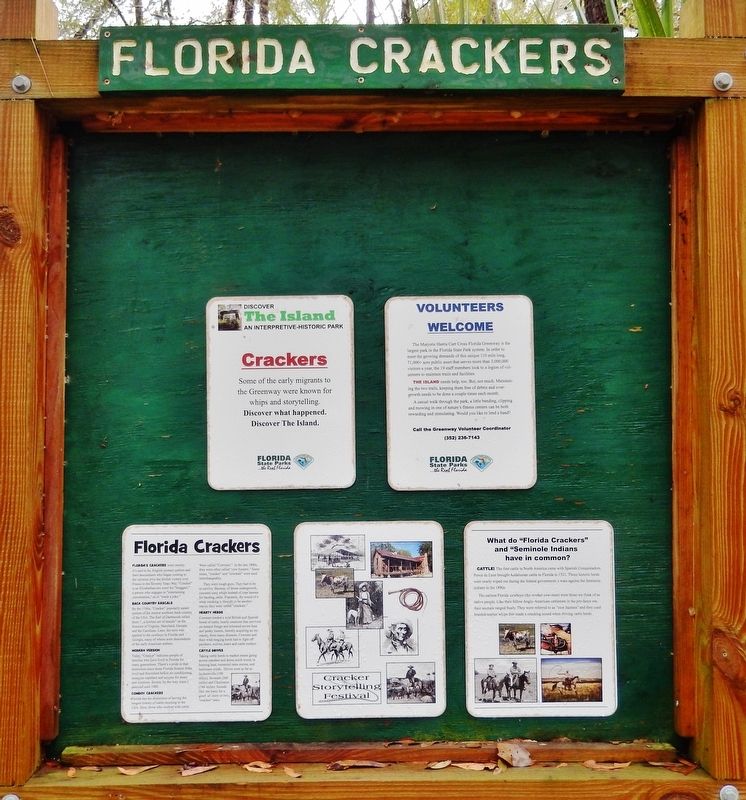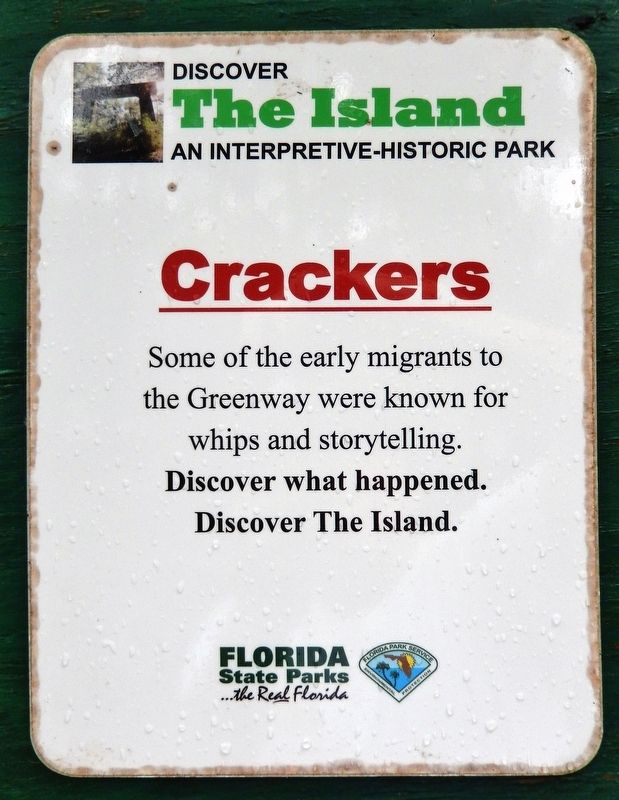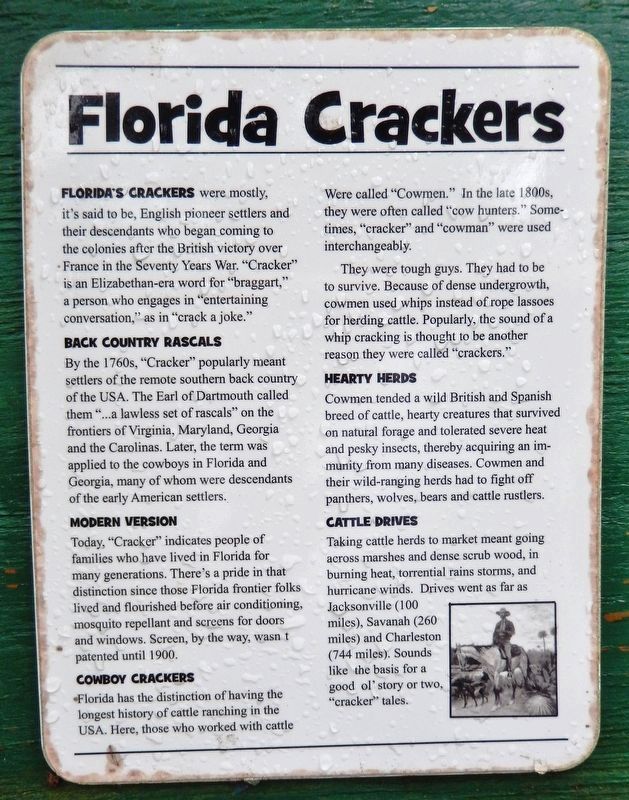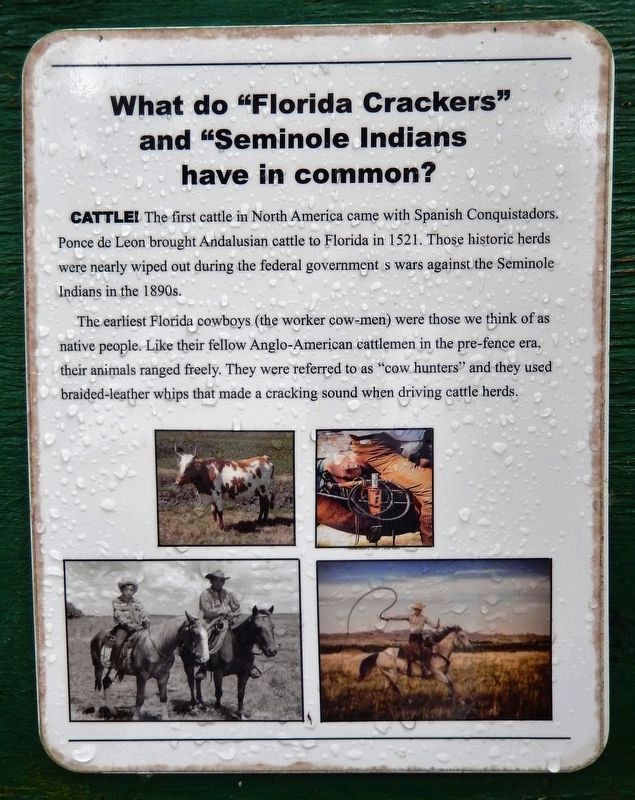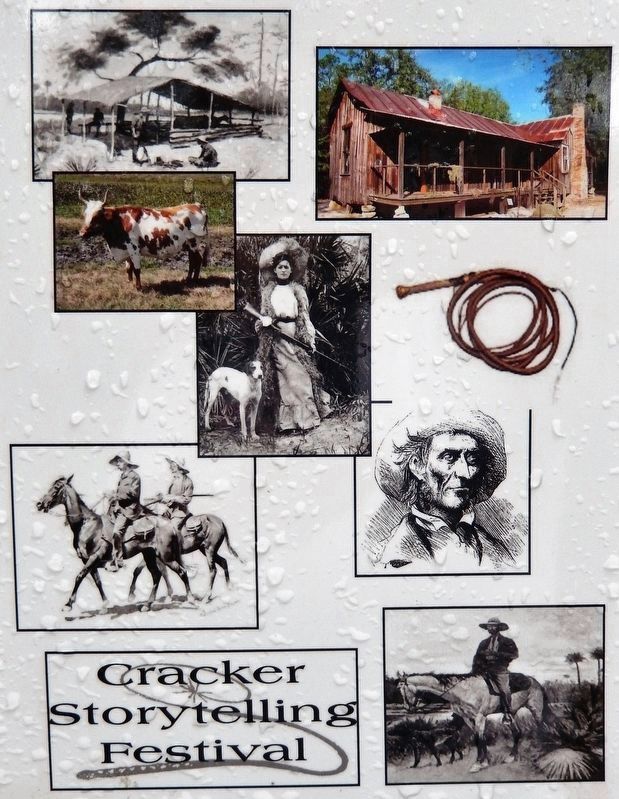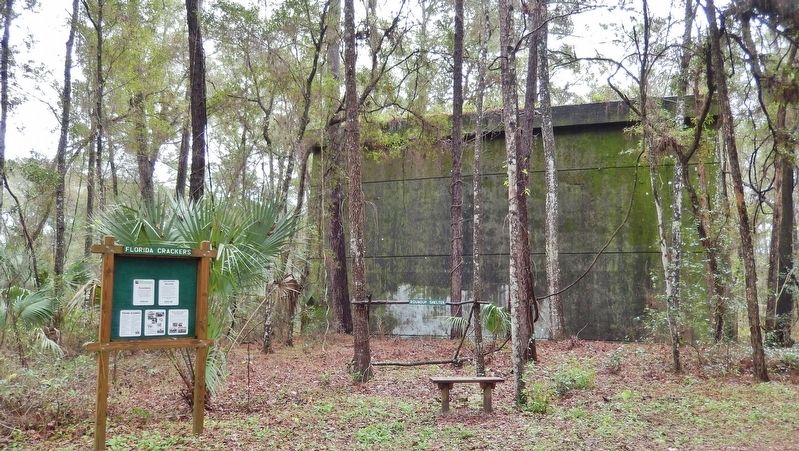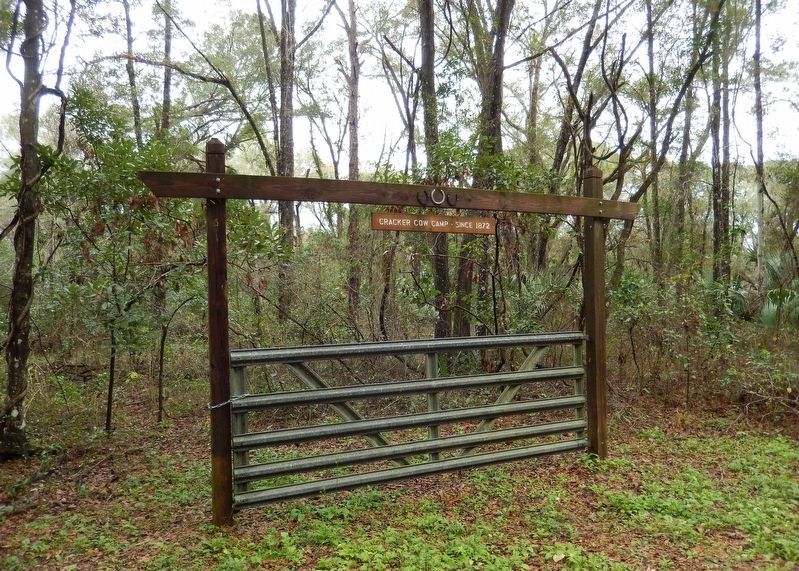Near Ocala in Marion County, Florida — The American South (South Atlantic)
Florida Crackers
Historic Florida Barge Canal Trail
Some of the early migrants to the Greenway were known for whips and storytelling. Discover what happened. Discover The Island.
Florida’s Crackers were mostly, it's said to be, English pioneer settlers and their descendants who began coming to the colonies after the British victory over France in the Seventy Years War. "Cracker" is an Elizabethan-era word for "braggart," a person who engages in "entertaining conversation," as in "crack a joke."
Back Country Rascals
By the 1760s, "Cracker" popularly meant settlers of the remote southern back country of the USA. The Earl of Dartmouth called them "...a lawless set of rascals" on the frontiers of Virginia, Maryland, Georgia and the Carolinas. Later, the term was applied to the cowboys in Florida and Georgia, many of whom were descendants of the early American settlers.
Modern Version
Today, "Cracker" indicates people of families who have lived in Florida for many generations. There's a pride in that distinction since those Florida frontier folks lived and flourished before air conditioning, mosquito repellant and screens for doors and windows. Screen, by the way, wasn’t patented until 1900.
Cowboy Crackers
Florida has the distinction of having the longest history of cattle ranching in the USA. Here, those who worked with cattle were called "Cowmen." In the late 1800s, they were often called "cow hunters." Sometimes, "cracker" and "cowman" were used interchangeably.
They were tough guys. They had to be to survive. Because of dense undergrowth, cowmen used whips instead of rope lassoes for herding cattle. Popularly, the sound of a whip cracking is thought to be another reason they were called "crackers."
Hearty Herds
Cowmen tended a wild British and Spanish breed of cattle, hearty creatures that survived on natural forage and tolerated severe heat and pesky insects, thereby acquiring an immunity from many diseases. Cowmen and their wild-ranging herds had to fight off panthers, wolves, bears and cattle rustlers.
Cattle Drives
Taking cattle herds to market meant going across marshes and dense scrub wood, in burning heat, torrential rain storms, and hurricane winds. Drives went as far as Jacksonville (100 miles), Savanah (260 miles) and Charleston (744 miles). Sounds like the basis for a good ol’ story or two, "cracker" tales.
What do "Florida Crackers" and "Seminole Indians" have in common?
Cattle! The first cattle in North America came with Spanish Conquistadors. Ponce de Leon brought Andalusian cattle to Florida in 1521. Those historic herds were nearly wiped out during the federal government’s wars against the Seminole Indians in the 1890s.
The earliest Florida cowboys (the worker cow-men) were those we think of as native people. Like their fellow Anglo-American cattlemen in the pre-fence era, their animals ranged freely. They were referred to as "cow hunters" and they used braided-leather whips that made a cracking sound when driving cattle herds.
Erected by Florida State Parks.
Topics. This historical marker is listed in these topic lists: Animals • Native Americans • Settlements & Settlers • Wars, US Indian. A significant historical year for this entry is 1521.
Location. 29° 6.12′ N, 82° 5.344′ W. Marker is near Ocala, Florida, in Marion County. Marker can be reached from the intersection of Southeast 80th Street (County Road 328) and South Pine Avenue (U.S. 441), on the right when traveling east. Marker is located along the trail at "The Island" - Cross Florida Barge Canal Interpretive Park, just south of the Marion County Sheriff's Station. Touch for map. Marker is at or near this postal address: 3260 Southeast 80th Street, Ocala FL 34480, United States of America. Touch for directions.
Other nearby markers. At least 8 other markers are within walking distance of this marker. Florida Seminoles (a few steps from this marker); A Tribe Lost: Timicua (a few steps from this marker); Florida Seminole Nations History (a few steps from this marker); Oklahoma Seminole Nations History (a few steps from this marker); Cat Face (within shouting distance of this marker); Greenway Greenlife (within shouting distance of this marker); History: Crops (within shouting distance of this marker); Green Monsters (within shouting distance of this marker). Touch for a list and map of all markers in Ocala.
Related markers. Click here for a list of markers that are related to this marker. Historic Florida Barge Canal Trail
Also see . . . Florida cracker. Wikipedia entry:
The Florida "cowhunter" or "cracker cowboy" of the 19th and early 20th centuries was distinct from the Spanish vaquero and the Western cowboy. Florida cowboys did not use lassos to herd or capture cattle. Their primary tools were cow whips and dogs. Florida cattle and horses were smaller than the western breeds. The "cracker cow", also known as the "native" or "scrub" cow, averaged about 600 pounds and had large horns and large feet. (Submitted on February 24, 2021, by Cosmos Mariner of Cape Canaveral, Florida.)
Credits. This page was last revised on November 25, 2021. It was originally submitted on February 20, 2021, by Cosmos Mariner of Cape Canaveral, Florida. This page has been viewed 464 times since then and 81 times this year. Photos: 1, 2, 3, 4, 5, 6, 7. submitted on February 24, 2021, by Cosmos Mariner of Cape Canaveral, Florida.
